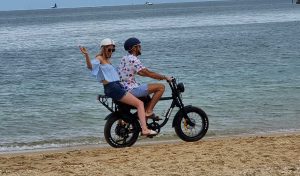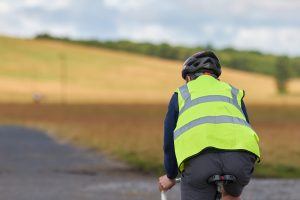Are Throttle Electric Bikes Legal in Australia?
Understanding the Legal Status of Throttle Electric Bikes in Australia
Electric bikes have gained popularity in Australia as a convenient and eco-friendly mode of transportation. Among the various types of e-bikes available, throttle electric bikes have generated significant interest. These bikes, equipped with a throttle that allows riders to accelerate without pedaling, provide a unique riding experience. However, their legality in Australia is a topic of debate and confusion. In this article, we’ll explore the legal status of throttle electric bikes in Australia and provide a comprehensive overview of the regulations surrounding them.

Types of Electric Bikes
Before delving into the legality of throttle electric bikes, it’s essential to understand the different types of electric bikes. In Australia, e-bikes are generally categorized into three classes:
Pedal-Assist E-Bikes (Class 1): These e-bikes have a motor that assists the rider only when they pedal. The motor automatically cuts off when the bike reaches a certain speed (usually 25 km/h).
Throttle-Controlled E-Bikes (Class 2): Throttle electric bikes can be propelled solely by using a hand-operated throttle without the need to pedal. They often come with pedals but do not require the rider to use them for propulsion.
Pedal-Assist E-Bikes with Throttle (Class 3): These e-bikes offer both pedal-assist and throttle modes, giving riders the flexibility to choose between pedaling and using the throttle for acceleration.
Regulations for Throttle Electric Bikes in Australia
The legality of throttle electric bikes in Australia varies depending on the state or territory. As a result, it’s essential to be aware of the specific regulations in your area. However, there are some common rules and guidelines that apply to throttle electric bikes nationwide:
Maximum Power Output: In most states, throttle electric bikes are limited to a maximum power output of 200 watts. This means that the motor’s power should not exceed this limit to be considered legal.
Maximum Speed: Throttle electric bikes in Australia are generally limited to a maximum speed of 25 km/h. Once the bike reaches this speed, the motor should cut off, and the rider must rely on pedal power.
Age Restrictions: Some states may impose age restrictions for riders of throttle electric bikes. For example, in Queensland, riders must be at least 16 years old to operate a throttle e-bike.
Helmet Requirements: Regardless of the type of e-bike, riders are required to wear an approved bicycle helmet in all states and territories.
Registration and Licensing: Unlike traditional motor vehicles, throttle electric bikes do not require registration or a license to operate. However, it’s important to note that the rules may change, so staying updated with local regulations is crucial.
Private Property Use: Throttle electric bikes can often be used on private property without adhering to public road regulations. This is particularly relevant for individuals who use their e-bikes on their own land.

State-Specific Regulations
While there are national guidelines for throttle electric bikes, specific regulations can vary from one state or territory to another. Here is an overview of the regulations in some of the most populous states:
New South Wales (NSW): Throttle electric bikes are considered Class 2 e-bikes. They are allowed on roads and bike paths, provided they meet the 200-watt power limit and 25 km/h speed limit. Riders must be at least 16 years old.
Victoria: Victoria follows similar guidelines to NSW, allowing throttle e-bikes on roads and bike paths as Class 2 e-bikes. Riders must also adhere to the 200-watt power limit and 25 km/h speed limit.
Queensland: In Queensland, riders must be at least 16 years old to operate a throttle electric bike. These bikes are considered Class 2 e-bikes and must meet the same power and speed limits.
Western Australia: Throttle e-bikes are recognized as Class 2 e-bikes in Western Australia and are subject to the 200-watt power and 25 km/h speed restrictions. https://www.theebikespecialist.com.au/ncm-ebikes-fremantle/
South Australia: South Australia’s regulations are in line with the national standards, permitting throttle electric bikes as Class 2 e-bikes.
Tasmania: Throttle electric bikes are considered Class 2 e-bikes in Tasmania, and they must meet the standard power and speed limits.
Northern Territory: The Northern Territory typically adheres to the national regulations, allowing throttle e-bikes as Class 2 e-bikes.
Australian Capital Territory (ACT): ACT follows the national standards for throttle electric bikes, classifying them as Class 2 e-bikes.
It’s crucial to check with local authorities or refer to the specific state or territory legislation for the most up-to-date information on throttle electric bike regulations.
Penalties for Non-Compliance
Riders who fail to adhere to the regulations for throttle electric bikes in their respective states or territories may face penalties, fines, or even confiscation of their e-bikes. The severity of the consequences can vary, so it’s essential to stay informed about local laws and guidelines.
Conclusion
Throttle electric bikes provide a convenient and eco-friendly way to get around in Australia. While their legality is generally recognized nationwide, it’s crucial to be aware of the specific regulations that apply in your state or territory. By understanding the rules and guidelines for throttle electric bikes, riders can enjoy a safe and compliant riding experience while contributing to a greener and more sustainable future for transportation in Australia. Remember that regulations can change, so staying informed and respecting local laws is of utmost importance.




